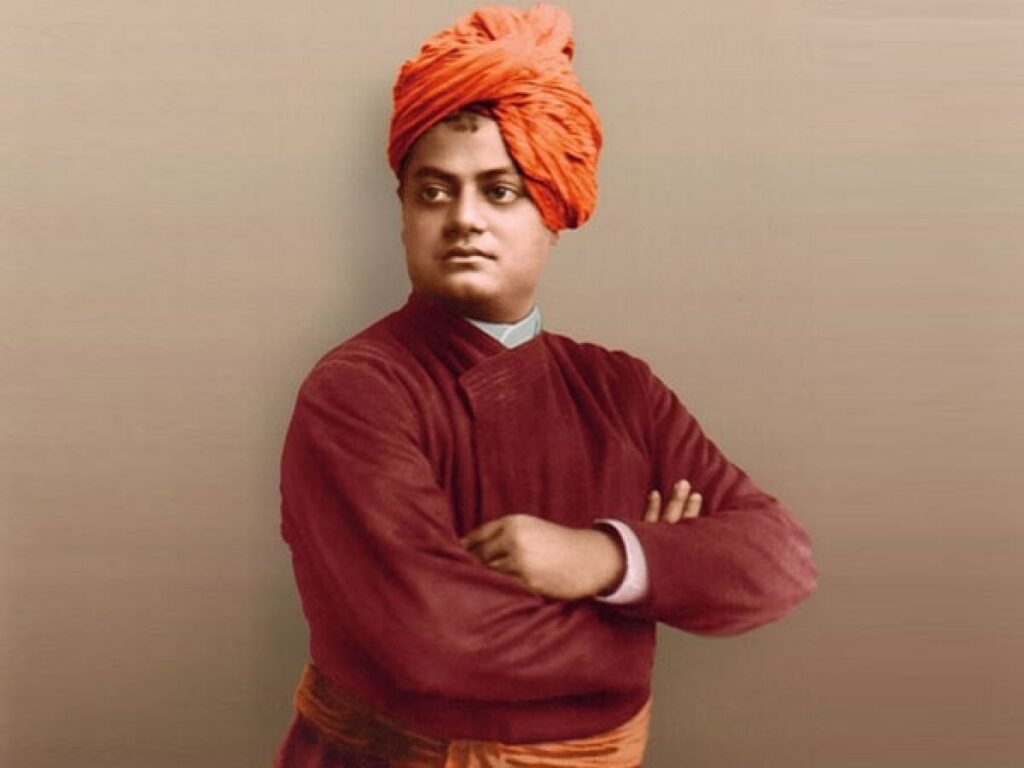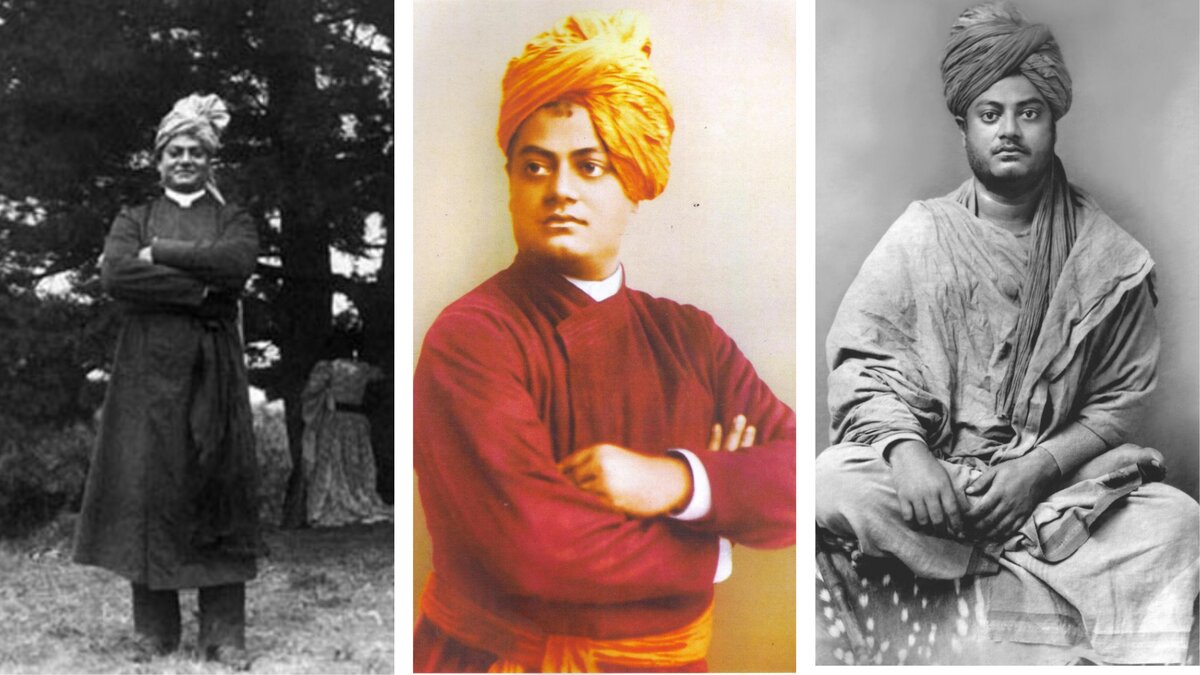When we hear the name Swami Vivekananda, it often brings to mind his powerful speeches, profound teachings, and his tireless work to bridge the gap between the East and West. But beyond his public persona, his life is filled with stories—some well-known, others tucked away—that carry timeless lessons. These anecdotes are not just inspiring; they’re windows into his character and his deep understanding of spirituality.
In this post, I’ll share some popular stories from Vivekananda’s life that touched my heart. Each story is more than an event; it’s a lesson in how to live with courage, humility, and purpose.
1. The Fearless Monk and the Lion
One of the most famous stories about Swami Vivekananda is from his days as a wandering monk. While walking through a dense forest, he encountered a group of people running in fear. They warned him about a lion roaming nearby. Instead of panicking, Vivekananda calmly continued on his path, thinking, Why should I fear? Life and death are but illusions.
The lion appeared, and Vivekananda stood still, meeting its gaze without a trace of fear. After a tense moment, the lion walked away, leaving him unharmed.
From this I learned that fear is often our biggest enemy, holding us back from realizing our potential. Vivekananda’s courage reminds me of his famous words:
“Face the brutes. When you are afraid of anything, dive deep into it.”
In everyday life, this could mean confronting a difficult conversation, pursuing a daunting goal, or even sitting with uncomfortable emotions instead of running away. Strength lies in meeting challenges head-on.
2. The Test of Patience at a Riverbank
As a young disciple of Ramakrishna Paramahamsa, Vivekananda was eager to master the mysteries of life. One day, his guru asked him to fetch water from the river. Vivekananda, engrossed in his spiritual ambitions, hurried to complete the task. In his haste, he spilled the water multiple times and had to keep going back.
Finally, Ramakrishna smiled and said, “Haste and impatience will not bring you closer to truth. Patience and mindfulness are the paths to enlightenment.”
This story speaks volumes to me about the importance of being present and patient. How often do we rush through life, chasing results, and miss the joy of the moment? Whether it’s in relationships, work, or personal growth, patience is a skill that grounds us.
3. The Inspiring Lesson on Selflessness
During his travels, Swami Vivekananda once stayed at a poor farmer’s house. Despite the farmer’s struggles, he shared everything he had with the monk. Touched by the man’s generosity, Vivekananda said, “True wealth lies not in what we possess but in what we give to others.”
This moment deeply influenced Vivekananda’s belief that spirituality is not just about individual growth but also about contributing to the well-being of others.
This tells me that generosity isn’t about giving large amounts; it’s about giving wholeheartedly, even when we have little. Next time you offer help—a smile, a kind word, or a listening ear—remember that these small acts can be profoundly spiritual.
4. The Lesson in Humility with the British Professor
During his travels in the West, Swami Vivekananda was once mocked by a British professor for his traditional Indian attire. Instead of reacting angrily, Vivekananda calmly said, “In your culture, a tailor makes a gentleman. In ours, character does.”
This dignified response silenced the professor and left everyone in awe of his wit and humility.
For me, this story is a reminder that our true worth lies in our values and character, not in external appearances. In a world where we often judge ourselves and others by material standards, Vivekananda’s words encourage us to focus on what truly matters.
5. The Banana and the Monkey
During one of his lectures, Vivekananda used a simple yet profound analogy. He held up a banana and said:
“The monkey is satisfied with the banana, but man wants to peel it and see what’s inside.”
This story humorously conveys a deep truth: human beings have an innate curiosity to look beyond the surface and understand the essence of things. It’s this curiosity that drives both spiritual and scientific exploration.
This resonates with me as a reminder to look beyond appearances, whether it’s in understanding people, situations, or life itself. True wisdom comes when we seek deeper truths instead of staying content with superficial understanding.
6. The Boatman and the Scholars
Once, Vivekananda was traveling by boat with a group of scholars who were debating religious doctrines. A simple boatman overheard their discussion and asked a question. Instead of answering, the scholars dismissed him, saying he wouldn’t understand.
Vivekananda, however, took the time to explain the concepts to the boatman in simple terms. The man, grateful, said, “You’re not just a great scholar; you’re a true teacher.”
Knowledge is valuable, but its true worth lies in how we use it to uplift others. This story reminds me to share what I know in ways that empower others, rather than using it to boost my ego.
7. The Parable of the Rope and Snake
Vivekananda often used this parable to explain how illusions cloud our understanding. Imagine mistaking a rope for a snake in dim light. The snake doesn’t exist—it’s an illusion. But until we realize it’s a rope, the fear feels real.
He said: “Ignorance is the cause of all misery. Knowledge removes fear, just as light reveals the truth of the rope.”
This story reminds me of how often we’re held back by fears and assumptions that aren’t grounded in reality. By seeking clarity and understanding, we can free ourselves from unnecessary suffering.

Why These Stories of Swami Vivekananda Matter Today
These stories aren’t just about Swami Vivekananda—they’re about us. They remind us of the qualities we aspire to cultivate: courage, humility, patience, and a spirit of service. In a world that often feels chaotic and fragmented, his life stories provide a compass to navigate challenges with grace and wisdom.
What makes these lessons timeless is their simplicity. You don’t need to be a monk or a scholar to apply them. They’re about everyday spirituality—how you treat others, how you face your fears, and how you stay grounded amidst life’s uncertainties.
Final Thoughts
As I write this, I’m reminded of one of Vivekananda’s most profound quotes:
“We are what our thoughts have made us; so take care of what you think. Words are secondary. Thoughts live; they travel far.”
His life wasn’t just about grand speeches or philosophical ideas; it was about living those ideas every day. That’s what makes his stories so inspiring—they show us what spirituality looks like in action.
Which of these stories touched you the most? Or do you have a favorite story about Swami Vivekananda? Let me know in the comments—I’d love to hear your thoughts!

